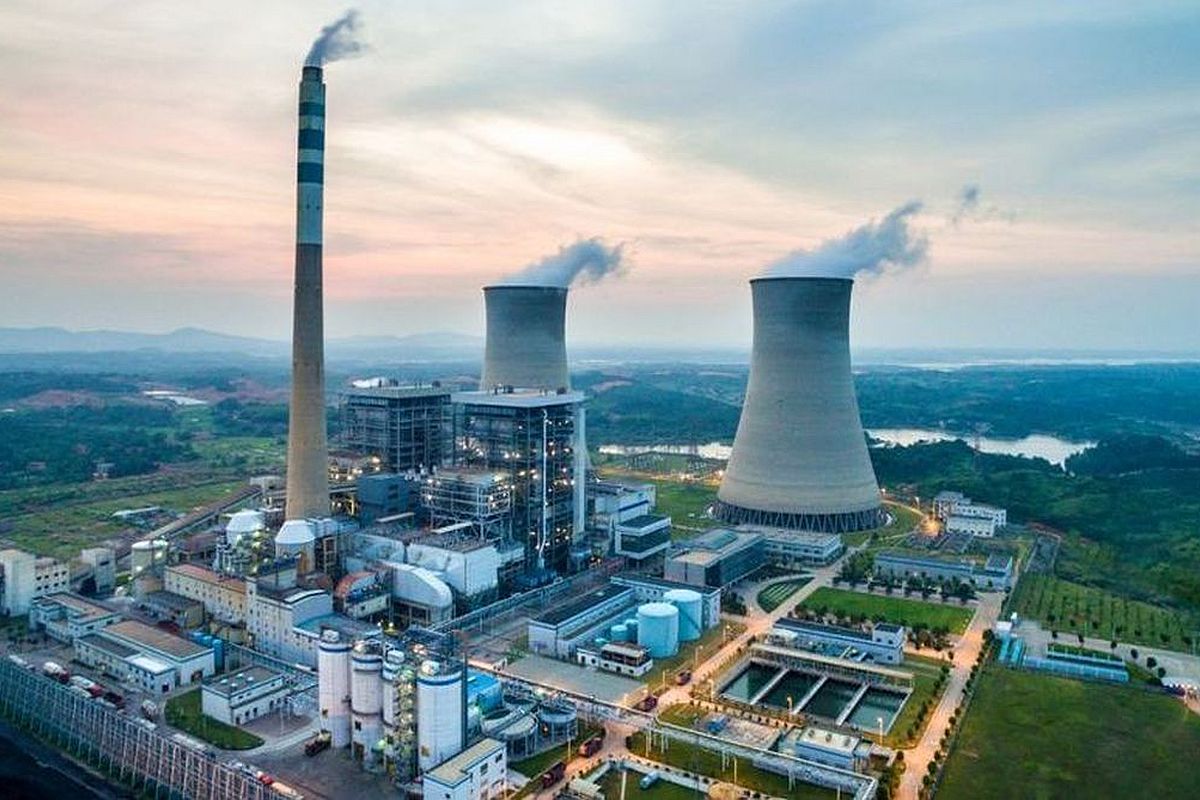India to triple installed nuclear power capacity by 2031-32: Union Minister
In a reply to a question in the Rajya Sabha, the minister said the present installed nuclear power capacity is set to increase from 8,180 MW to 22,480 MW by 2031-32.
Nuclear power stations are expensive to build but cheap to operate. The economy of power generation is analysed according to “Levelised Cost of Electricity” (LCOE). LCOE accounts for the overall building cost, cost of operation and the cost of waste management in respect to the overall electricity output of the station over its lifetime.

Representation Picture
According to a recent report, India’s energy consumption will rise by 156 per cent between 2017 and 2040. India generates more than 80 per cent of its energy from fossil fuels. These fuels – coal, oil and gas – create major greenhouse gas (GHG) emissions, causing air pollution, health hazards and harsh climate impacts.
Global fossil fuel dependency is predicted to decrease by 13 per cent by 2040. To fill this gap, nonconventional and sustainable energy generation such as solar power, wind, hydro, geothermal and nuclear energy need to be pushed forward. Nuclear power can be an emerging clean energy source in India. It is a sustainable, environmentally friendly and economically viable option which can replace fossil fuel-derived energy and augment renewable energy sources.
Advertisement
Nuclear power stations are expensive to build but cheap to operate. The economy of power generation is analysed according to “Levelised Cost of Electricity” (LCOE). LCOE accounts for the overall building cost, cost of operation and the cost of waste management in respect to the overall electricity output of the station over its lifetime. As per this analysis, nuclear power plants are the most cost- effective mode of renewable energy generation and have low greenhouse gas emissions. Capital costs account for 60 per cent of nuclear power’s LCOE.
Advertisement
Radioactive waste management plays a crucial role in de-popularising nuclear power. Radioactive wastes are classified into three major categories according to their radioactivity. The spent radioactive fuel accounts for 3 per cent of total waste but is responsible for 95 per cent of total radioactivity. There are several methods to ‘seal off’ this waste and these methods are being used effectively across the globe.
World energy politics revolving around the sale of nuclear fuel and transference of reactor technology makes it difficult for developing countries to set up nuclear power stations. A total of 35 per cent of global GHG emissions are generated from the energy sector. Viewing its economic utility and environmental benefits, most of the EU-27 nations are prioritizing nuclear energy. A 2018 report indicates that 28 per cent of EU energy demands are supplied by nuclear energy. A US Energy Information Administration record of 2019 indicated that 19.6 per cent of US energy is generated from nuclear sources.
Uranium-235 is widely used to generate nuclear energy. Uranium is 100 times more common than silver, but the U-235 isotope accounts for only 0.7 per cent of the total available uranium. Uranium is extracted from Uraninite ore. Then it is processed in enrichment facilities that aim to increase the concentration of U-235 to between 3 and 5 per cent for its consequent commercial use in nuclear power generation.
One of the foremost constraints in sharing nuclear fissile materials across nations is the fear of its potential use in nuclear warfare. To safeguard against this possibility, experts have proposed nuclear fuel enrichment facilities be constructed under multilateral agreements. This policy can facilitate sharing of nuclear technology as well as minimize its unethical use.
Nuclear power generation started in India in 1948 when the Atomic Energy Commission (AEC) was established. By 1963, India had set up four nuclear power reactors. By 2018, India had seven nuclear power plants with 23 nuclear reactors. As of January 2020, India’s installed nuclear power capacity is about 1.84 per cent of the total national energy generation capacity of 3,68,690 megawatts. India’s nuclear power programme is developed without much international support. India is not a party to the Nuclear Non-Proliferation Treaty.
For 34 years, trade bans have restricted the nation’s access to U- 235, because of India’s nuclear weapons programme. The natural reserve of U-235 is limited, so the energy development programme has evolved around thorium, another radioactive mineral. Thorium is extracted from monazite ore, which is relatively abundant and safe compared to uranium.
India’s national target is to increase nuclear power generation capability to 22,400 megawatts by 2031. With climate change impacts looming large and most metropolitan cities showing health-deteriorating pollution, clean energy generation is compelling. In comparison with renewable energy systems like solar, wind, hydro, geothermal and biofuels, nuclear energy is more economical as well as sustainable. It should be given high preference by India’s energy policy makers.
The writers are, respectively, independent researcher, assistant professor, and dean at Jindal School of Environment and Sustainability, O.P. Jindal Global University, Sonipat, Haryana.
Advertisement